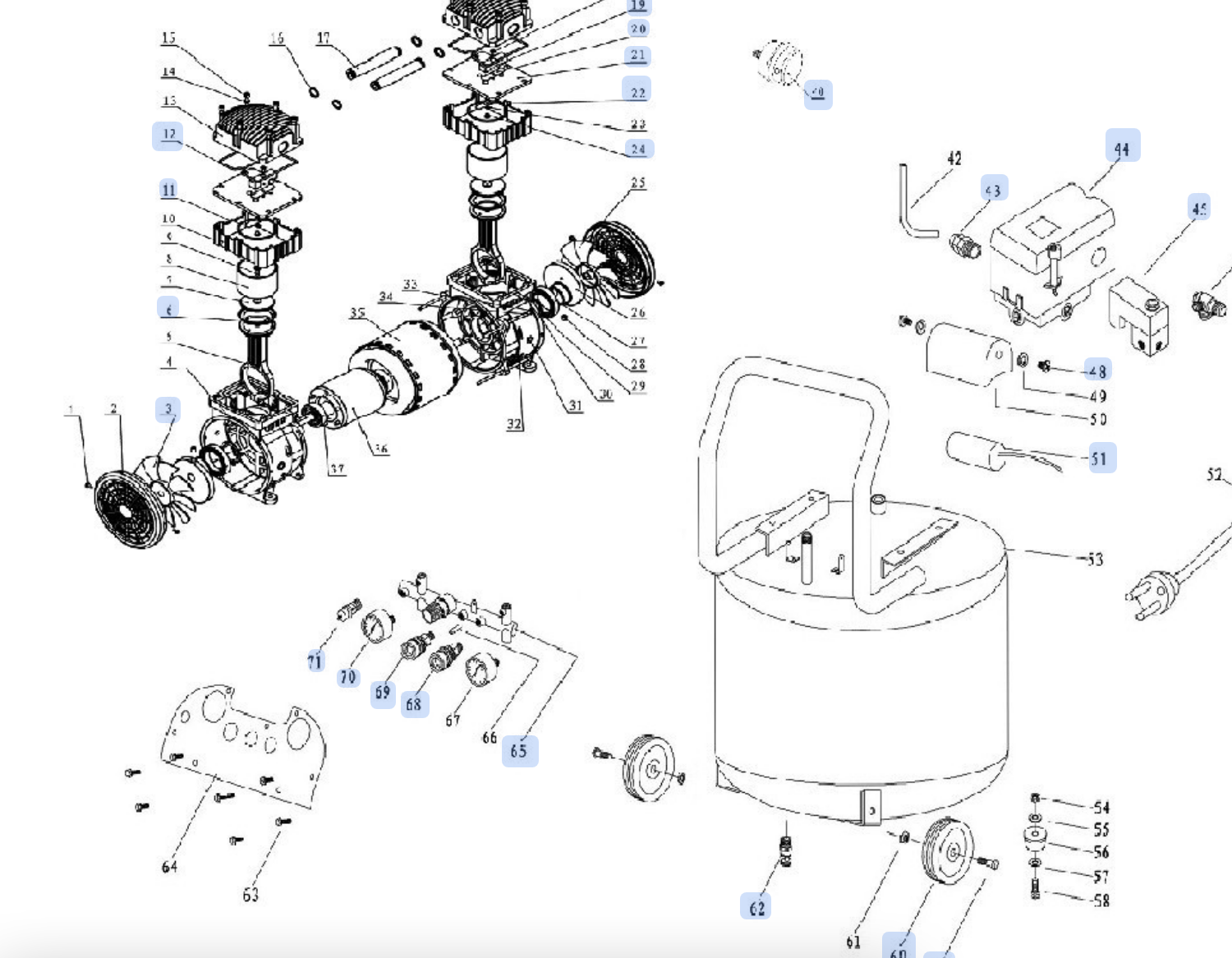How to Measure Thread Sizes for Air Compressor Fittings
When working with air compressors, selecting the correct fittings is crucial to ensure proper connections and prevent leaks. However, identifying the correct thread size can be tricky, especially if you’re unsure of the measurement process. This guide will walk you through the steps to accurately measure thread sizes for air compressor fittings.
1. Gather Your Tools
You’ll need:
- A thread gauge (optional but helpful)
- A ruler or caliper
- A fitting reference chart (see below)
2. Identify Thread Type
First, determine if the thread is male (external) or female (internal). Male threads are on the outside of the fitting, while female threads are on the inside.
Next, identify whether the thread is tapered or straight:
- Tapered threads (like NPT or BSPT) tighten as they screw in and require sealing tape or thread sealant. NPT threads are by far the most common thread type used on most air compressors.
- Straight threads (like BSPP) rely on a washer or O-ring for sealing.
For British Standard Pipe (BSP) threads:
- BSPT (British Standard Pipe Tapered) threads are tapered and create a seal by tightening into a mating fitting.
- BSPP (British Standard Pipe Parallel) threads are straight and require a sealing washer or O-ring to create a seal.
3. Measure Thread Diameter
Use a ruler or caliper to measure the outside diameter of male threads or the inside diameter of female threads. Record the measurement in inches or millimeters. For NPT threads, the key is to remember that an outside diameter measurement on an NPT thread will measure about ¼-inch over the advertised thread size of the fitting.
4. Count Thread Pitch
Thread pitch refers to the number of threads per inch (TPI) or the distance between threads (in millimeters for metric). Use a thread gauge to match the fitting’s threads or measure manually by counting threads over a 1-inch span.
5. Match with a Reference Chart
Use the chart below to determine the thread size based on your measurements:
| Nominal Thread Size | Outside Diameter (OD) | Threads Per Inch (TPI) | Thread Type |
| 1/8" NPT | 0.405 inches | 27 | Tapered |
| 1/4" NPT | 0.540 inches | 18 | Tapered |
| 3/8" NPT | 0.675 inches | 18 | Tapered |
| 1/2" NPT | 0.840 inches | 14 | Tapered |
| 3/4" NPT | 1.050 inches | 14 | Tapered |
| 1" NPT | 1.315 inches | 11.5 | Tapered |
| BSP (varies) | Matches OD to metric | Metric pitch varies | Tapered (BSPT) or Parallel (BSPP) |
For metric threads or other standards, consult a more detailed chart specific to your fittings.
Tips for Accuracy
- Double-check measurements to avoid mismatches.
- If you’re unsure, bring the fitting to a hardware store or consult your air compressor manual.
Measuring thread sizes for air compressor fittings might take a little patience, but it’s a skill that saves time and frustration. With accurate measurements and the right tools, you can ensure secure connections and keep your air compressor running smoothly.
Start measuring like a pro, and you’ll avoid leaks and mismatched fittings for good! Shopping for an air compressor fitting? You can search for your model number on the Master Tool Repair website and find the fitting you need on the digitally-enabled schematic.
Recent Posts
-
What Is a Compression Ring & Why Does Your Air Compressor Need One?
If your air compressor isn’t holding pressure like it used to, a worn-out compression ring mig …May 8, 2025 -
Power Meets Peace and Quiet: The California Air Tools 60065C Ultra-Quiet 60-Gallon Air Compressor
Looking for an air compressor that delivers powerful performance without rattling your entire worksp …May 1, 2025 -
How to Properly Install a Pulley with a Bushing on Your Air Compressor Motor
Installing a motor or engine pulley may seem simple, but getting it right—especially when it i …Apr 24, 2025





